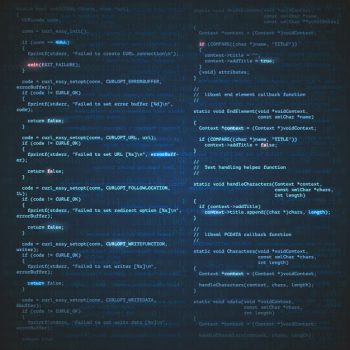
With great prompts comes great outputs. Well, at least for the largest language model released for beta testers mid-July this year, the OpenAI’s GPT-3 (Generative Pre-trained Transformer). GPT-3 is OpenAI’s third instalment of their artificial general intelligence capable of generating text outputs, answering questions, coding program languages and even completing the pixels of images based on the users’ inputs.
Coming with 175 billion parameters (values for its neural network, similar to a human brain’s neurons), GPT-3 surpasses its predecessor GPT-2 which had 1.5 billion parameters. What does this mean for the future of technology? GPT-3 has a much larger amount of information which translates to smarter and more comprehensive results.
OpenAI has already published some research about the model in May and with its official beta testing, many tech-savvy people tested GPT-3 for various purposes and shared their experiences on the Internet.
Some used the model to create text-based results such as poems with certain poets as input to write in their style, one used it to write an article about GPT-3 itself and others tested the model to generate news articles. Aside from these, users can also generate songs, manuals, short stories, essays, recipes and more text outputs using a prompt or input that best describes what you are looking for or starting with an incomplete sentence/phrase you want the model to fill in.
The model can also answer questions from the users or generate the questions itself to be used for quizzes. However, the model doesn’t only generate text-based outputs.
On Twitter, many users shared their experiences with GPT-3 regarding logical inquiries and programming languages. The model can generate the prime numbers following the first 12 primes as the prompt.
In a post, one user tested the model by giving it a description of a to-do list application he wants to see in the program. GPT-3 then generated the React code for a “fully-functioning app within a few seconds” as described by the user. One user even prompted the model to generate a code for a machine learning model, just by describing the dataset and required output.
For non-text results, GPT-3 can also complete a picture based on an initial portion of the photo as demonstrated in this article. It can also generate music videos based on text input by replacing the final layers of GPT-3 with a Flow-GAN architecture, according to the user.
With a big model like GPT-3, the future of technology is bright as the model can assist in a plethora of tasks that people and companies need. Some even described GPT-3 as the next big thing to blockchain because of its potential to be a disruptive technology.
However, such technology, like any other one, has its benefits and drawbacks. GPT-3 can help industries to automate mundane or complex tasks but the model can also introduce a spread of false information, as it can generate texts based on a user’s desired input. In this age of information, this setback can be detrimental. The model can also be used to spread hate against certain individuals.
With this, the model should be used with caution, as its output relies on a user’s input. The next thing GPT-3 will generate is in your hands and with good prompts to start with, GPT-3 will also produce good results.
 (0)
(0) (0)
(0)Archive
- April 2024(81)
- March 2024(112)
- February 2024(109)
- January 2024(95)
- December 2023(56)
- November 2023(86)
- October 2023(97)
- September 2023(89)
- August 2023(101)
- July 2023(104)
- June 2023(113)
- May 2023(103)
- April 2023(93)
- March 2023(129)
- February 2023(77)
- January 2023(91)
- December 2022(90)
- November 2022(125)
- October 2022(117)
- September 2022(137)
- August 2022(119)
- July 2022(99)
- June 2022(128)
- May 2022(112)
- April 2022(108)
- March 2022(121)
- February 2022(93)
- January 2022(110)
- December 2021(92)
- November 2021(107)
- October 2021(101)
- September 2021(81)
- August 2021(74)
- July 2021(78)
- June 2021(92)
- May 2021(67)
- April 2021(79)
- March 2021(79)
- February 2021(58)
- January 2021(55)
- December 2020(56)
- November 2020(59)
- October 2020(78)
- September 2020(72)
- August 2020(64)
- July 2020(71)
- June 2020(74)
- May 2020(50)
- April 2020(71)
- March 2020(71)
- February 2020(58)
- January 2020(62)
- December 2019(57)
- November 2019(64)
- October 2019(25)
- September 2019(24)
- August 2019(14)
- July 2019(23)
- June 2019(54)
- May 2019(82)
- April 2019(76)
- March 2019(71)
- February 2019(67)
- January 2019(75)
- December 2018(44)
- November 2018(47)
- October 2018(74)
- September 2018(54)
- August 2018(61)
- July 2018(72)
- June 2018(62)
- May 2018(62)
- April 2018(73)
- March 2018(76)
- February 2018(8)
- January 2018(7)
- December 2017(6)
- November 2017(8)
- October 2017(3)
- September 2017(4)
- August 2017(4)
- July 2017(2)
- June 2017(5)
- May 2017(6)
- April 2017(11)
- March 2017(8)
- February 2017(16)
- January 2017(10)
- December 2016(12)
- November 2016(20)
- October 2016(7)
- September 2016(102)
- August 2016(168)
- July 2016(141)
- June 2016(149)
- May 2016(117)
- April 2016(59)
- March 2016(85)
- February 2016(153)
- December 2015(150)